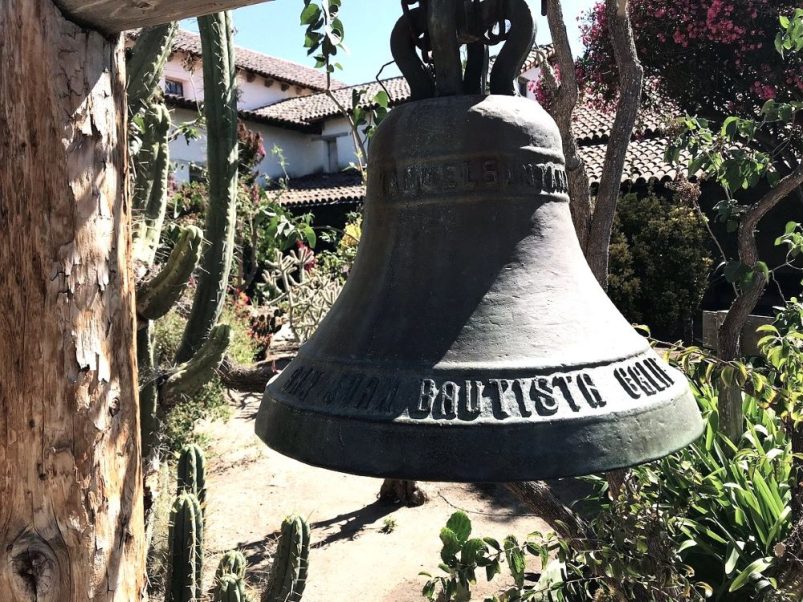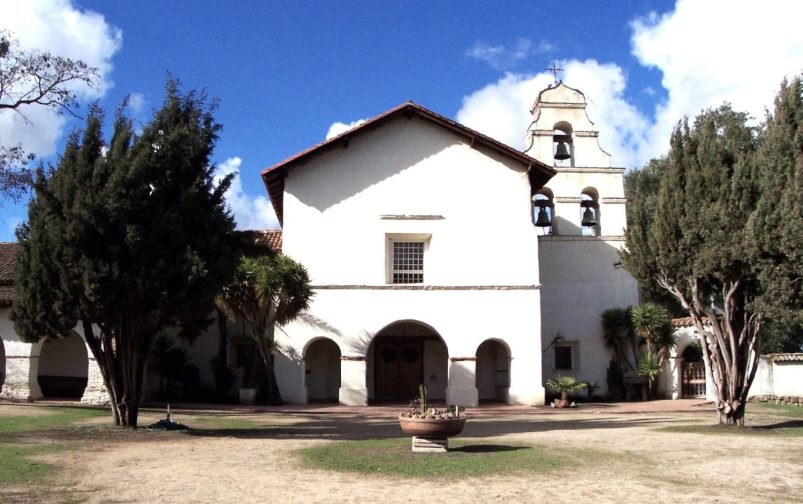Spanish Corporal Juan Ballesteros and five men came to the site of San Juan Bautista Mission (“Saint John the Baptist”) in the late spring of 1797. In a month, they had erected a chapel, houses for themselves and the Padres, and a granary. Then Father Lasuén arrived for the formal dedication on June 24, 1797.
The first baptism, an Indian lad about ten years old, occurred a little over two weeks later, with the Corporal as a sponsor. The first white baptism was that of a son of the Corporal. The first funeral, in September, was for the Corporal’s infant son. Thus, with these simple acts of faith, Corporal Ballesteros gained his niche in the history of Mission San Juan Bautista.
Unknowingly, the Padres had located the mission site directly on a great earthquake fault. At times, there were as many as six earth shocks a day. The temblors separated the walls of the buildings from top to bottom, and huge cracks appeared in the ground. Ignoring the hazard, a church began to rise from the same site in 1803. It was to be the most magnificent church in the mission chain, 72 x 188 feet, with three aisles and adobe walls three feet thick. However, the great earthquake of 1906 forced the abandonment of the outside aisles and the filling in of the arches separating the aisles.

Thomas Doak, a sailor from Boston who jumped ship in Monterey in 1816, built and decorated the reredos behind the altar in the new church. He is thought to have been the first American settler in California. The original tiles are still on the church floor. A baptismal font, 40 inches in diameter, was sculpted by Indians from a large block of native sandstone. A side door leads to the old cemetery on the shady north side of the church. Here, Indian converts were buried in their blankets, without coffins. As at other sites, Mission Indians ultimately disappeared.
However, the history of San Juan Bautista after secularization is happier than at most other missions. The mixed residents continued to support the Mission Church, and services have been held without interruption. Today, modern buildings at the rear of the beautiful mission garden house rectory and parish offices, while the old monastery wing, with its colonnade of arches facing the only remaining Spanish plaza in California, houses a fine museum. Hidden steel beams give earthquake protection, the bell wall has been completed, and the side aisles restored. The grand church is at last finished.
